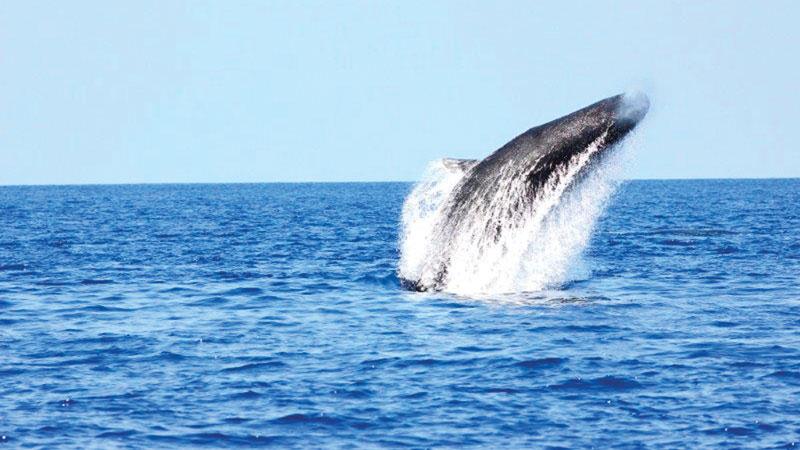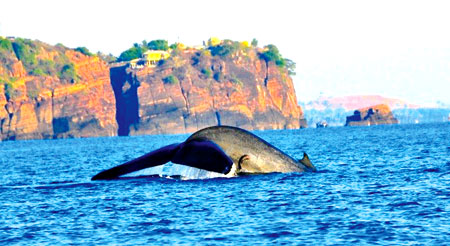
 The first blue whale on the east coast has been spotted and the season of the ultimate marine mammal excursion has kicked off in Trincomalee, and Trinco Blu by Cinnamon has launched its whale watching program with the services of expert naturalists at Cinnamon Nature Trails (CNT).
The first blue whale on the east coast has been spotted and the season of the ultimate marine mammal excursion has kicked off in Trincomalee, and Trinco Blu by Cinnamon has launched its whale watching program with the services of expert naturalists at Cinnamon Nature Trails (CNT).
Guests visiting this resort could enjoy the cool sandy beaches of Trinco and even catch a glimpse of a great blue whale while soaking up the sun, according to a hotel press release. Visitors do not have to travel more than 6km into the sea to witness a considerable number of sperm whales and blue whales. During this season, Trinco becomes the whale watching hot spot. The CNT team has been GPS tracking the locations of all the eastern whales for the past six years.
Escorted by experts from CNT, guests will gain the added bonus of witnessing off-shore birds while scouring the sea for the great and playful mammals of the ocean – the whales and the dolphins.
Commenting on this experience, CNT Manager of Field Operations and Wild Life Biologist, Vimukthi Weeratunga states; “Whale and Dolphin watching at Trincomalee is a unique experience, as its waters are home to the deepest sea canyon in the country which meets the nutrient rich waters of the Mahaweli River, creating the ideal conditions required for a thriving congregation of marine mammals.”
The Indian Ocean was declared as a whale sanctuary in 1981, which in turn had the BBC filming sperm whales in Trinco in 1982, the first recordings of the mega pod in Sri Lanka’s eastern waters. It is the Cinnamon Nature Trails team with the support of Sri Lanka Navy that initiated the search for whales in the eastern waters at the dawn of peace in 2010 and found that the whale population discovered decades ago were still very much in existence.
 This inspired the CNT team to develop their research and further ensure the preservation of the marine mammals in this area. Using GPS location tracking the CNT team together with specialists hope to ascertain the science behind the mega pod, consisting an estimated 200 sperm whales, continuously congregating in the eastern waters of the Island during this season – end March to mid-May.
This inspired the CNT team to develop their research and further ensure the preservation of the marine mammals in this area. Using GPS location tracking the CNT team together with specialists hope to ascertain the science behind the mega pod, consisting an estimated 200 sperm whales, continuously congregating in the eastern waters of the Island during this season – end March to mid-May.
One of the team’s most featured marine naturalist, Dayaratne was filmed and interviewed by BBC last year, for his efforts to follow the mega pod.
Taking it one step further, the CNT team has also developed a unique relationship with the fisher community, teaming up with them as operational partners. The fishing community is now provided with sophisticated engines for their whaler boats to help with the whale watching excursions.
